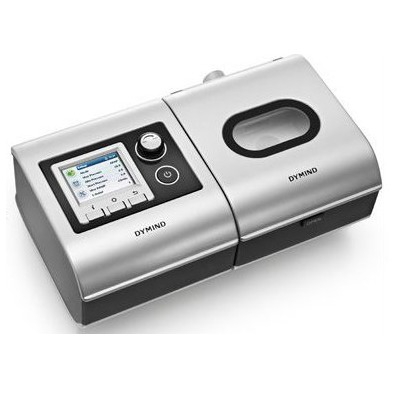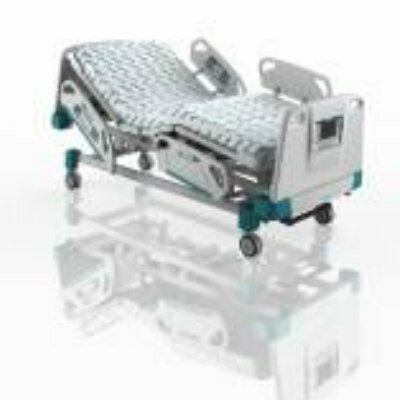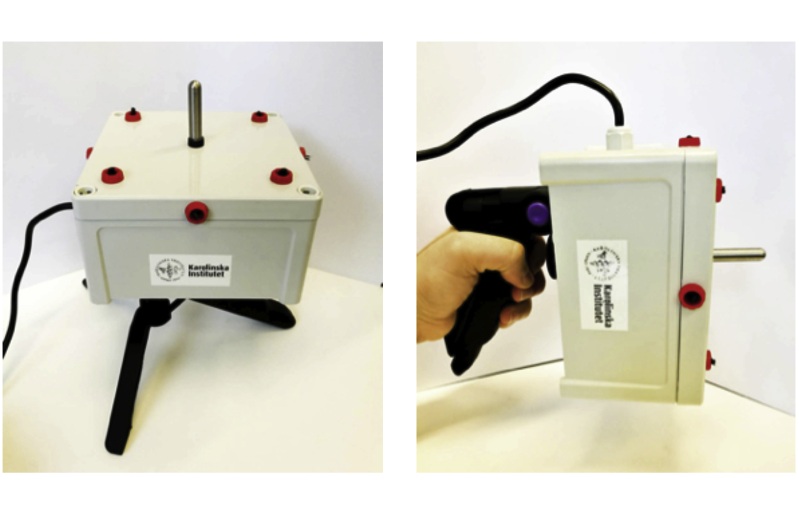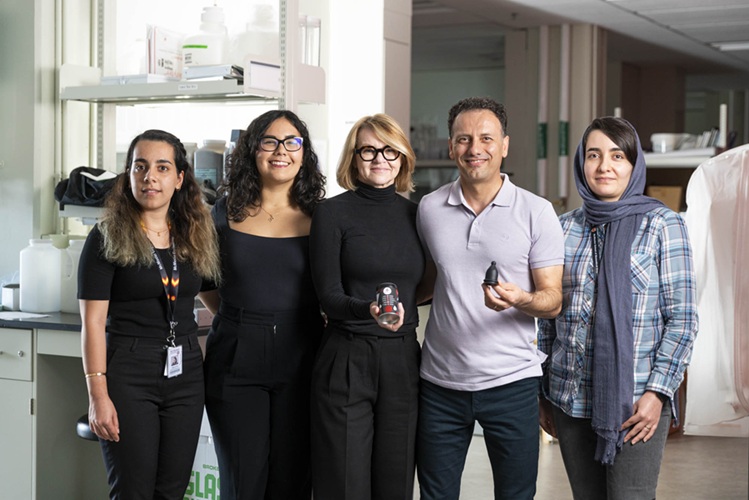First Single-Incision Robotic Surgery Performed on Left Colon
|
By HospiMedica International staff writers Posted on 19 Oct 2011 |
Landmark single-incision robotic surgery on the left abdomen has been used for the first time to perform a left hemicolectomy.
Surgeons at George Washington University Hospital (GWUH; Washington DC, USA) performed the surgery using a single four-centimeter incision around the umbilicus. The surgeons used the DaVinci system, a product of Intuitive Surgical (Sunnyvale, CA, USA), to perform a medial to lateral approach with extra corporeal resection and anastomosis. At the beginning of the case, the robotic arms were crossed, and in the console the hand designations were switched so that the right and left hand controls were reversed, affording better control of the instrumentation.
While conventional laparoscopic surgery typically requires four incisions and a four-day hospital stay, single-incision robotic surgery involves less pain, fewer chances of postoperative problems--such as infection--and a shorter recovery period. The robot's three-dimensional (3D) view simulates normal vision, enabling the surgeon to see around structures more easily and avoid damaging the ureter, spleen, and major blood vessels. The robot also offers more stability, dexterity, and triangulation, allowing optimal manipulation of the tissue. The surgery was performed on August 22, 2011.
“With just one cut, a foot-long section of the patient's infected colon was removed through the belly button. Thirty-six hours after surgery, the patient was ready to go home,” said Vincent Obias, MD, director of the division of colon and rectal surgery at GWUH. “The left colon is technically more challenging for single-incision surgeries. Vital blood vessels and structures are situated close to the colon, requiring a high level of precision.”
A left hemicolectomy is designed to remove the descending colon, approximately half of the large intestine; it is necessary to remove such a large section of the bowel due to blood supply distribution, rather than considerations of disease extent. After removal of the diseased portion, the two free ends are joined in an anastomosis. Occasionally, if the sections are inflamed, it is necessary to create a temporary stoma to divert the bowel contents.
Related Links:
George Washington University Hospital
Intuitive Surgical
Surgeons at George Washington University Hospital (GWUH; Washington DC, USA) performed the surgery using a single four-centimeter incision around the umbilicus. The surgeons used the DaVinci system, a product of Intuitive Surgical (Sunnyvale, CA, USA), to perform a medial to lateral approach with extra corporeal resection and anastomosis. At the beginning of the case, the robotic arms were crossed, and in the console the hand designations were switched so that the right and left hand controls were reversed, affording better control of the instrumentation.
While conventional laparoscopic surgery typically requires four incisions and a four-day hospital stay, single-incision robotic surgery involves less pain, fewer chances of postoperative problems--such as infection--and a shorter recovery period. The robot's three-dimensional (3D) view simulates normal vision, enabling the surgeon to see around structures more easily and avoid damaging the ureter, spleen, and major blood vessels. The robot also offers more stability, dexterity, and triangulation, allowing optimal manipulation of the tissue. The surgery was performed on August 22, 2011.
“With just one cut, a foot-long section of the patient's infected colon was removed through the belly button. Thirty-six hours after surgery, the patient was ready to go home,” said Vincent Obias, MD, director of the division of colon and rectal surgery at GWUH. “The left colon is technically more challenging for single-incision surgeries. Vital blood vessels and structures are situated close to the colon, requiring a high level of precision.”
A left hemicolectomy is designed to remove the descending colon, approximately half of the large intestine; it is necessary to remove such a large section of the bowel due to blood supply distribution, rather than considerations of disease extent. After removal of the diseased portion, the two free ends are joined in an anastomosis. Occasionally, if the sections are inflamed, it is necessary to create a temporary stoma to divert the bowel contents.
Related Links:
George Washington University Hospital
Intuitive Surgical
Latest Surgical Techniques News
- Superior Orthopedic Implants Combat Infections and Quicken Healing After Surgery
- Laser-Based Technique Eliminates Pancreatic Tumors While Protecting Healthy Tissue
- Surgical Treatment of Severe Carotid Artery Stenosis Benefits Blood-Brain Barrier
- Revolutionary Reusable Duodenoscope Introduces 68-Minute Sterilization
- World's First Transcatheter Smart Implant Monitors and Treats Congestion in Heart Failure
- Hybrid Endoscope Marks Breakthrough in Surgical Visualization
- Robot-Assisted Bronchoscope Diagnoses Tiniest and Hardest to Reach Lung Tumors
- Diamond-Titanium Device Paves Way for Smart Implants that Warn of Disease Progression
- 3D Printable Bio-Active Glass Could Serve as Bone Replacement Material
- Spider-Inspired Magnetic Soft Robots to Perform Minimally Invasive GI Tract Procedures
- Micro Imaging Device Paired with Endoscope Spots Cancers at Earlier Stage
- AI Spine Model Could Reduce Surgical Risks
- Novel Method Uses Interstitial Fluid Flow to Predict Where Brain Tumor Can Grow Next
- World’s First Custom Anterior Cervical Spine Surgery Performed Using Personalized Implant
- Implantable Biodegradable Scaffold Helps Broken Bones Regrow Quickly
- First Human Spinal Cord Repair Using Patient Own Cells Could Cure Paralysis
Channels
Critical Care
view channel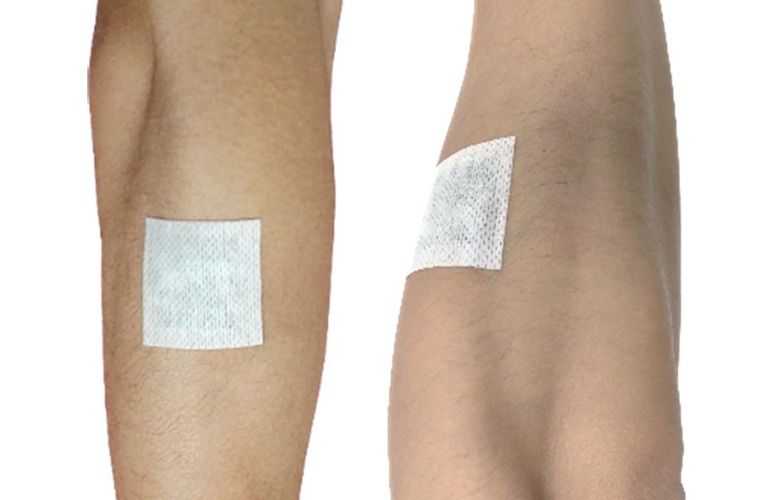
Highly Sensitive On-Skin Sensing Monitor Detects Vitamin B6 and Glucose in Sweat
Vitamin B6 plays a crucial role in immune function and brain health, yet patients with chronic conditions such as diabetes often experience deficiencies that can cause irritability, depression, anemia,... Read more
Artificial Intelligence Revolutionizing Pediatric Anesthesia Management
Administering anesthesia to children poses unique challenges, as their anatomy varies significantly even among patients of the same age. Misjudging the correct breathing tube size or failing to detect... Read morePatient Care
view channel
Revolutionary Automatic IV-Line Flushing Device to Enhance Infusion Care
More than 80% of in-hospital patients receive intravenous (IV) therapy. Every dose of IV medicine delivered in a small volume (<250 mL) infusion bag should be followed by subsequent flushing to ensure... Read more
VR Training Tool Combats Contamination of Portable Medical Equipment
Healthcare-associated infections (HAIs) impact one in every 31 patients, cause nearly 100,000 deaths each year, and cost USD 28.4 billion in direct medical expenses. Notably, up to 75% of these infections... Read more
Portable Biosensor Platform to Reduce Hospital-Acquired Infections
Approximately 4 million patients in the European Union acquire healthcare-associated infections (HAIs) or nosocomial infections each year, with around 37,000 deaths directly resulting from these infections,... Read moreFirst-Of-Its-Kind Portable Germicidal Light Technology Disinfects High-Touch Clinical Surfaces in Seconds
Reducing healthcare-acquired infections (HAIs) remains a pressing issue within global healthcare systems. In the United States alone, 1.7 million patients contract HAIs annually, leading to approximately... Read moreHealth IT
view channel
Printable Molecule-Selective Nanoparticles Enable Mass Production of Wearable Biosensors
The future of medicine is likely to focus on the personalization of healthcare—understanding exactly what an individual requires and delivering the appropriate combination of nutrients, metabolites, and... Read moreBusiness
view channel
Philips and Masimo Partner to Advance Patient Monitoring Measurement Technologies
Royal Philips (Amsterdam, Netherlands) and Masimo (Irvine, California, USA) have renewed their multi-year strategic collaboration, combining Philips’ expertise in patient monitoring with Masimo’s noninvasive... Read more
B. Braun Acquires Digital Microsurgery Company True Digital Surgery
The high-end microsurgery market in neurosurgery, spine, and ENT is undergoing a significant transformation. Traditional analog microscopes are giving way to digital exoscopes, which provide improved visualization,... Read more
CMEF 2025 to Promote Holistic and High-Quality Development of Medical and Health Industry
The 92nd China International Medical Equipment Fair (CMEF 2025) Autumn Exhibition is scheduled to be held from September 26 to 29 at the China Import and Export Fair Complex (Canton Fair Complex) in Guangzhou.... Read more




